Dreadnought builder Vladimir Polievktovich Kostenko
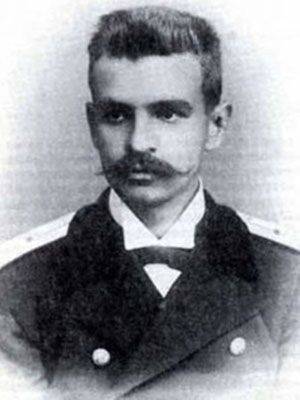 The biography of this amazing man, like an ocean in a drop of water, reflected the entire complex era, in which there were both the bitterness of defeats and the greatest victories. His whole journey from the ship engineer who survived the Tsushima battle to the USSR State Prize laureate through Japanese captivity and four conclusions: under the king, under the Germans and twice under Soviet power - this path includes all the vicissitudes of that time. A brilliant engineer, whose technical talent and services to the Motherland outweighed uncomfortable political beliefs and errors. Shipbuilder, whose works created shipbuilding centers in Severodvinsk and Komsomolsk-on-Amur. The scientist who left behind a great scientific heritage. It is strange that there are no novels or films about Kostenko. Such an eventful life is worthy of an entire epic. In addition (unlike, say, from Vladimir Kokovtsev, who badly ended Pikulevsky), the life of Vladimir Kostenko is an example of an alternative choice of a Russian officer.
The biography of this amazing man, like an ocean in a drop of water, reflected the entire complex era, in which there were both the bitterness of defeats and the greatest victories. His whole journey from the ship engineer who survived the Tsushima battle to the USSR State Prize laureate through Japanese captivity and four conclusions: under the king, under the Germans and twice under Soviet power - this path includes all the vicissitudes of that time. A brilliant engineer, whose technical talent and services to the Motherland outweighed uncomfortable political beliefs and errors. Shipbuilder, whose works created shipbuilding centers in Severodvinsk and Komsomolsk-on-Amur. The scientist who left behind a great scientific heritage. It is strange that there are no novels or films about Kostenko. Such an eventful life is worthy of an entire epic. In addition (unlike, say, from Vladimir Kokovtsev, who badly ended Pikulevsky), the life of Vladimir Kostenko is an example of an alternative choice of a Russian officer.On the "Eagle" to Tsushima
Vladimir Polievktovich Kostenko, whose life and activity was almost continuously associated with fleet, was born far from the open sea - in the village of Velikie Budishcha of the then Poltava province in the family of a zemstvo doctor and teacher. As a child, he, being with his father in Sevastopol, went on an excursion to the battleship Chesma. A large warship, guns, mechanisms - all of this struck the boy so much that he determined the further direction of his life. Vladimir from a young age proved to be a capable student, graduated from the classical gymnasium with a gold medal and entered the first year of the shipbuilding department of the Marine Engineering School of Emperor Nicholas I (VVVMU named after Dzerzhinsky), located in Kronstadt. And here Kostenko was in his place - at the time of release, his name was written on an honorary marble plaque. It was May 1904, and the Russo-Japanese War was already in full swing. On May 19, a young engineer receives an appointment to the St. Petersburg military port as an assistant to the builder of the newest battleship Orel. This was largely due to the theme of Kostenko's thesis - the project of a new lightweight armored cruiser - where the linear-elevated arrangement of gun turrets was provided for the first time in world shipbuilding practice. In practice, this was carried out by the Americans on dreadnoughts such as "Michigan" only in 1908.
In August, the 1904 of the year, when the preparatory work for the march to the Far East is being forced, the recent graduate becomes the ship engineer of the battleship Oryol. Among the other six naval engineers assigned to the Second Pacific Squadron, Kostenko’s 2 of October, along with a hastily completed ship, leaves for the Far East. Having become a test for stamina and courage, the squadron’s motley trip in its composition lasted 220 days. During this time, the ships have passed almost 18 thousand miles. 14 May 1905 began the tragic battle for our fleet Tsushima, where the newest battleships of the Borodino type, to which the Eagle belonged, lay the brunt of the battle. The next day, May 15, the remains of the squadron under the command of Rear Admiral Nebogatov were surrounded by the main forces of the Japanese fleet and surrendered. Among those that lowered the flags was the only surviving of the four newer battleships of the same type, the Eagle. Strongly injured on the eve of enemy fire, this ship did not tip over and survived thanks in large part to the system of quick leveling of the roll and trim introduced by Kostenko during construction. For this, later Vladimir Polievktovich was awarded the Order of St. Anne with swords and bow. Russian ships on the eve of the battle took a large amount of coal and other means of supply, so their stability was reduced.
Revolutionary debut
Kostenko stayed in Japanese captivity until February 6 1906. He was the only one of six ship engineers who went with the squadron from Kronstadt to survive the Tsushima battle. He is returning to Russia, engulfed in revolutionary events that have obscured even the bitterness of the lost war and the humiliating Portsmouth peace. It was necessary to restore the fleet. As early as April 1906, Kostenko was appointed assistant builder of the battleship Andrei Pervozvanny in St. Petersburg. Completion of the ship is tense: the project is constantly being finalized and processed based on the experience of the recent war. 1 July 1907, Kostenko goes on a business trip to England to the factory in the city of Barrow-in-Furness, where the armored cruiser Rurik is being built by order of the Russian government. For success in this field engineer received the Order of St. Stanislav II degree.
In the autumn of 1908, Kostenko, who gained experience, is taken as a constructor at the Marine Technical Committee, which was headed by the then famous shipbuilder Alexei Nikolaevich Krylov. In 1909, as the head of the group of students of the Marine Engineering Academy, Kostenko again makes a long trip to England, where he visits a number of the largest shipyards, among which was Harland and Wolfe, located in Belfast. The construction of the largest passenger airliners, Olympic and Titanic, was already in full swing at the request of the White Star Line company. Kostenko, whom the British allowed to inspect the drawings of liners under construction, expressed serious doubts about the effectiveness of their unsinkability system, calling it highly simplified. The plant manager Carlisle was skeptical about his remarks. Not satisfied with the answer, Kostenko sent his calculations and calculations on the “Titanic” to Krylov, and he, having carried out his own calculations, came to similar conclusions. But even in this case, the management of the shipyard was unsubscribed by Kostenko, which is not going to sacrifice comfort and additional amenities to passengers for the sake of superficial conclusions of various theorists. On the night of 14 on 15 on April 1912, the Titanic sank after a collision with an iceberg - 1400 people died. Krylov wrote about this later: "The greatest ship in the world died, like ancient Babylon, from excessive luxury."
Upon his return to Russia, Kostenko continues to work intensively in the Marine Technical Committee. A trusting relationship is established between him and Krylov. The measured life of an engineer (in the rank of captain) lasted until 23 in March 1910, when he was suddenly arrested, imputing revolutionary activities, and taken into custody in the Trubetskoy Bastion of the Peter and Paul Fortress.
The main evidence that testified against Kostenko was a large bundle of leaflets, which allegedly was deposited with political prisoner Stanislav Mikhailovitch who escaped from a Siberian exile. However, in the process of further investigation and inquiry it turned out that not everything is so simple. The fact is that Vladimir Polievktovich, being in Japanese captivity, became friends with some representatives of the Left Social Revolutionaries and imbued with their ideas. This phenomenon was widespread among Russian servicemen who survived the tragedy of Port Arthur and Tsushima and lost confidence in the current government, which proved to be incompetent, archaic and inert. In the ranks of the Socialist Revolutionaries, Kostenko was prominent in many respects due to his personal qualities. He entered the revolutionary bureau of the party, having an underground nickname Cicero. In 1908, the Socialist Revolutionaries were preparing an attempt on the life of Nicholas II during his intended visit to Glasgow on the retreating armored cruiser Rurik. For this purpose, militants were sent to the crew of the ship - Avdeev and Koptilovich. When visiting the cruiser by the emperor, they were to shoot him. In the organization of the assassination attempt on the tsar, Kostenko also took an active part. To this end, he even met in England with a prominent leader of the revolutionary underground terrorist Boris Savinkov. The emperor actually visited Rurik in the summer of 1908. Twice, the insurgents infiltrating the team had the opportunity to open fire almost certainly, but they did not. As it turned out, the performers changed their mind to make an assassination attempt, since this could prevent the uprising in the Baltic Fleet. Until the end of his life Savinkov could not forgive himself or his fellow party members for this missed opportunity.
The details of Kostenko’s participation in this action became known much later, otherwise he would not have been able to avoid the gallows. In July 1910, he was sentenced to six years of hard labor for participating in revolutionary activities. His immediate superior, General A. Krylov, persistently and vigorously pressed for him. The scientist, taking advantage of his long-time friendship with Deputy Minister Admiral Grigorovich, Minister of Maritime Affairs, described Kostenko as a very talented and capable engineer who also had military awards, and was able to convince Grigorovich to seek an amnesty from Nicholas II.
After listening to the admiral, who rested on the merits of Kostenko to Russia, his participation in the Tsushima battle, the emperor spoke favorably: “We need talented people,” and signed the petition. However, the engineer received a pardon on the condition of complete dismissal from military service.
Dreadnought Builder
Such a specialist, as Kostenko, in the conditions of the beginning of the revival of the Russian fleet after a lost war simply could not be out of business. He was too valuable a figure. In the 1912 year, on the recommendation of Krylov and Grigorovich, Kostenko assumed the position of head of the technical shipbuilding office of the Society of Nikolaev Plants and Naval Yards Naval, which at that time was the most technically equipped plant in southern Russia.
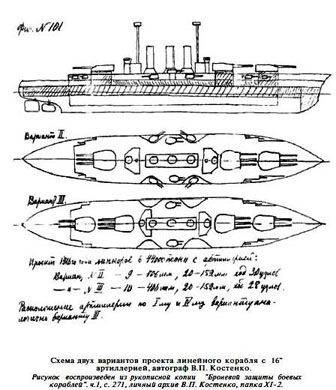 The Empire then experienced a real shipbuilding boom: the newest dreadnoughts and cruisers, destroyers and submarines, and ships of other classes were built. The main front of the work on the Naval, of course, concerned the two largest objects of construction - the dreadnoughts Empress Catherine the Great and the Emperor Nicholas I laid before the First World War. Knowing about the constructive reloading of the lead ship of the “Empress Maria” series, built on the “Russud”, which caused her to have a nose trim, Grigorovich allowed Kostenko to make the necessary changes to the same type of ships that were being built on the “Naval”. A large nomenclature of various equipment at the factory where Vladimir Polievktovich worked, allowed her, in contrast to the “Russud”, to independently manufacture boilers, towers of the main caliber and other mechanisms. Moreover, Naval manufactured tower installations for the dreadnought Emperor Alexander III dreadnought being built on the Russud. Kostenko did not confine himself to improvements in already existing ship projects, but also looked into the future. In 1916, at the height of the First World War, a group of designers under his leadership began to design the next generation of battleships, which were to be put into operation after the construction of a series of ships of the “Empress Maria” type was completed.
The Empire then experienced a real shipbuilding boom: the newest dreadnoughts and cruisers, destroyers and submarines, and ships of other classes were built. The main front of the work on the Naval, of course, concerned the two largest objects of construction - the dreadnoughts Empress Catherine the Great and the Emperor Nicholas I laid before the First World War. Knowing about the constructive reloading of the lead ship of the “Empress Maria” series, built on the “Russud”, which caused her to have a nose trim, Grigorovich allowed Kostenko to make the necessary changes to the same type of ships that were being built on the “Naval”. A large nomenclature of various equipment at the factory where Vladimir Polievktovich worked, allowed her, in contrast to the “Russud”, to independently manufacture boilers, towers of the main caliber and other mechanisms. Moreover, Naval manufactured tower installations for the dreadnought Emperor Alexander III dreadnought being built on the Russud. Kostenko did not confine himself to improvements in already existing ship projects, but also looked into the future. In 1916, at the height of the First World War, a group of designers under his leadership began to design the next generation of battleships, which were to be put into operation after the construction of a series of ships of the “Empress Maria” type was completed.Several variants of ships armed with 16-inch main-caliber guns in two- or three-gun turrets were developed. Kostenko’s proposed structure of a system of constructive anti-torpedo protection of the hull became classic for most projects of heavy artillery ships developed at the turn of the 20-s, and the full width of the onboard protective layer of the 1917 battleship project was the largest among all these projects. But 1917 came the year with all the difficult events for Russia, and the country was not at all up to shipbuilding.
Town governor
1 September 1917 of the year Vladimir Polievktovich was elected head of the Nikolaev city government. In March, 1918, as a result of an agreement between the Central Rada and the Central Powers bloc, German and Austrian troops began advancing in southern Russia. Odessa declared itself a “free city”, however 14 March was occupied by Austrian troops. March 16 from Odessa to the divorced bridge across the Southern Bug came part of the German 52 army corps (21 reserve regiment and 5 Bavarian artillery regiment). One and a half mile floating bridge was divorced. The Germans demanded to restore the crossing and let part of them into the city freely, otherwise they threatened to resolve the issue by force. Kostenko, after consulting with his colleagues, realizing that civilians would be the first to suffer, ordered the rebuilding to be restored, since there were no large military formations in Nikolaev, except for a few Red Army units who left the city on the night of March 17. Nikolaev was occupied by German troops the next day.
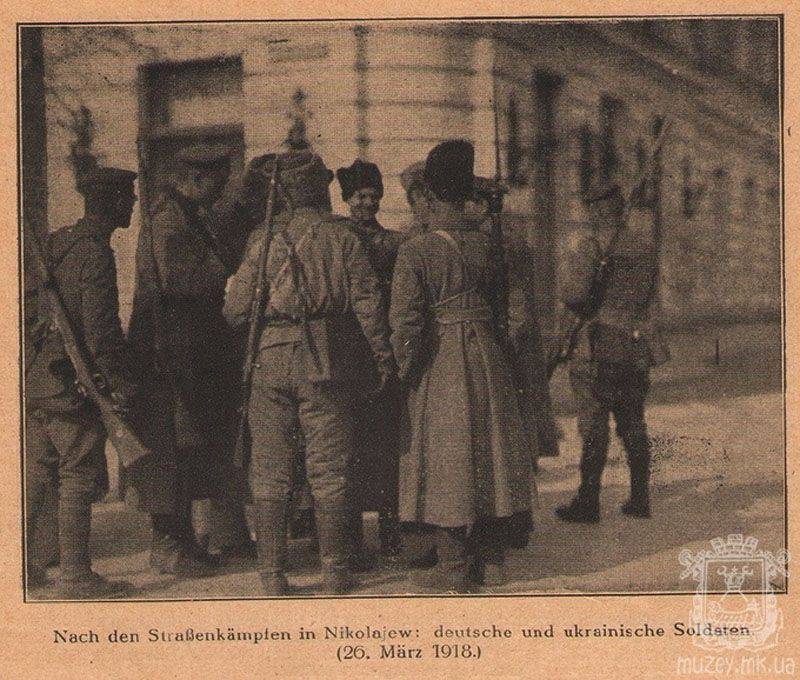
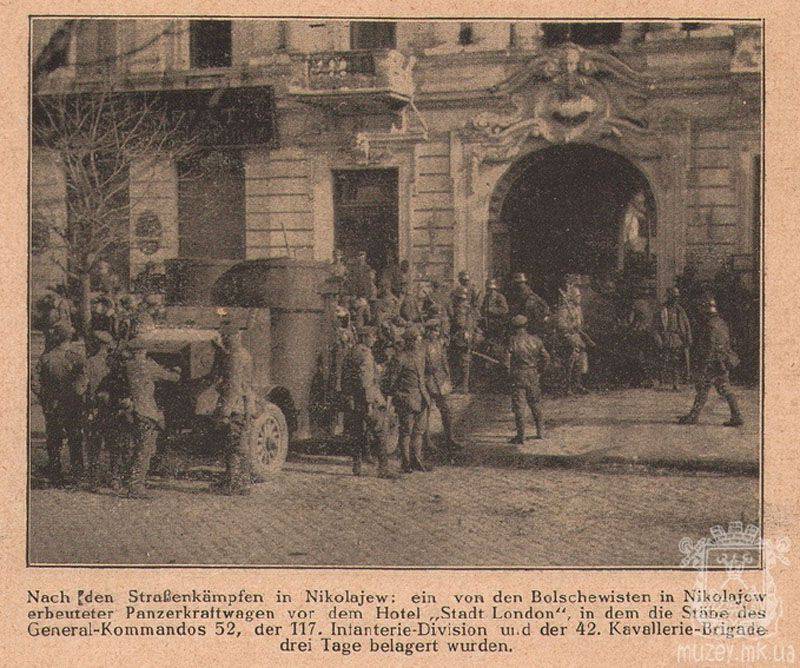
Local government bodies previously dispersed by the Bolsheviks were restored, self-defense brigades were allowed. However, on March 22, an uprising broke out in Nikolaev, organized by the Bolshevik underground and the Union of front-line soldiers. For several days, fighting took place on the streets in which, according to various estimates, thousands of people died from 1,5 to 2 - mostly civilians. 25 March Kostenko was arrested by the Germans for poor organization of order in the city, although he had no direct relationship to what was happening. The German command was going to put him under the tribunal, but the persistent petition of the public and the townspeople forced the commandant of the garrison to release Kostenko. Subsequently, the south of the country and Nikolaev in particular experienced a whole kaleidoscope of power: the Entente troops came after the Germans left, they were replaced by red, then white entered the city, and finally, by the beginning of 1920, Nikolaev finally became Soviet.
Old school specialist
14 April 1920 of the year Kostenko is appointed a member of the technical management board of the United Nikolaev State Shipbuilding Yard. An experienced engineer, he does a lot to clean up the desolation of shipyards with numerous unfinished ships. The country began to restore the fleet and industry. In 1922, Kostenko’s Nikolaev period of life ended, and he moved to the capital Kharkov, where he became the head of the industry of the Supreme Economic Council of Ukraine. In 1924, he was already in Leningrad, at a new level - a member of the board of directors for the technical part of Sudotrest. It was a state corporation, to put it in modern language, which included a number of large and medium-sized factories and enterprises in Leningrad, Moscow and Kharkov.
At the end of the 20s in the USSR, several major trials were held to identify theft and direct sabotage (for example, the Shakhty case). In most cases, local leaders, trying to hide their incompetence, threw all the blame on the pre-revolutionary technical specialists, exposing them "pests and saboteurs." Not escaped a similar fate and Kostenko. 27 December 1928, he is arrested on charges of overspending the estimated cost of transport ships. The case was fabricated to hide the leadership’s misses. 9 On July 1929, Kostenko was sentenced to death, which was replaced by 10-year imprisonment in Solovki. However, the need for technical specialists only increased due to the onset of industrialization — and Kostenko was transferred to Kharkov to serve the term of imprisonment at the Special Offices at the OGPU, later such institutions would be called “sharashkas.” The prisoner engineer is working on a project for the reconstruction and modernization of Nikolaev shipbuilding plants. Some of the solutions he developed for the rapid assembly of civilian vessels anticipated similar measures taken by Americans during the mass production of Liberty-type transports during World War II. A little later, in 1930, Kostenko was transferred to Leningrad, where he was also developing a number of projects for the modernization of Leningrad factories.
In 1931, he is released early. The engineer, who was released from the conclusion, goes to work at Proektverf, a design organization engaged in the reconstruction and construction of plants, renamed GSPI-1936 since 2. Vladimir Polievktovich is appointed chief engineer of this institute. Even the origin and the recent "article" could not affect this appointment - the demand for qualified specialists of the old school was great.
Bulk docks on the Silinsky lakes
In 1931, Japan is expanding its military expansion in China - the situation in the Far East is deteriorating. The Soviet government is taking a series of measures to strengthen its Pacific borders. One of them was the decision to build a new shipyard on the Amur River in the Khabarovsk region. This decision was finally approved in August 1931. People's Commissar of Heavy Industry G.K. Ordzhonikidze ordered a special commission to fly to the Far East, which was supposed to look around and finally choose the location of the future plant. Kostenko, as part of a group of specialists from Proektverfi, flew to Khabarovsk in February 1932.
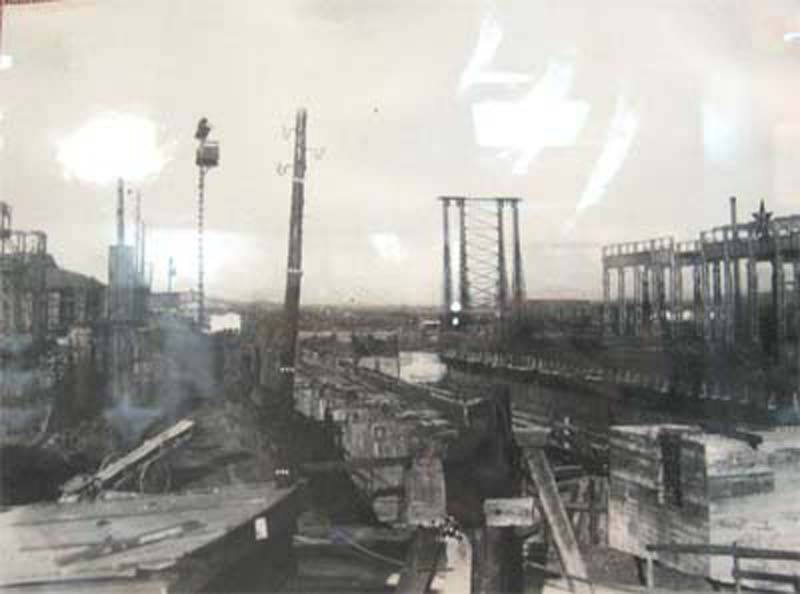
At the site it turned out that the initial site for the construction of the plant was not chosen very well. Amur is a difficult hydrographic river. Due to the large difference between the ebb and flow, it was impossible to use the channel for the construction of ships, it was necessary to equip a protected raid. Kostenko proposed to locate the plant in the Bolshoy and Maly Silinsky lakes, using one lake as an internal indoor pool, and another to use to complete construction outside the main fairway of the river, which eliminated the huge earthworks and the need to create an artificial pool with protective structures. In addition, Vladimir Polievktovich had an idea to abandon the traditional slipways, and to build bulk docks with hipped roofs - slipways. They should be the construction of ships with their further withdrawal into the waters of the plant. Such a solution would allow the use of minimal production areas and provide protection against water drops in the Amur. 20 August 1932, the design task was completed. It provided for the construction of ships on horizontal stocks in dry docks, after which the dock had to be flooded with water, and the object should be discharged into the bulk basin. Then, through the helix, the ship was to be transferred to the outbuilding embankment to the Big Silinskoe Lake. The builders are against this innovative approach. It came to a direct hearing and discussion of the issue at the Workshop (Council of Labor and Defense). During the emerging debate, Kostenko was supported by I. Stalin, and the question of building a plant on the Amur, according to the plan proposed by Vladimir Polievktovich, was resolved positively. The company was supposed to build almost completely finished vessels on horizontal stocks in heated dry docks under tent-type ceilings. This idea was brought to life for the first time in the practice of world shipbuilding.
Shipbuilder
After a while, the institute in which Kostenko worked had to solve an even more difficult task. In the second half of 30, the USSR planned to expand the construction of the ocean fleet, the core of which was to be designed Soviet-type battleships, heavy Kronstadt-type cruisers and light-weight Chapaevs. Neither in the Russian Empire, nor even in the USSR, have they built ships of such a displacement as promising battleships (standard displacement 60 thousand tons). For their construction and maintenance, it was necessary to create an entire infrastructure in a short time. According to Kostenko’s project, plant No. XXUMX (the current Black Sea Shipyard) is building the largest inclined slipway in Europe. It was on him in the 198-70-e years carried out the construction of aircraft carriers. A huge in size turret assembly shop was erected for assembling 80-mm artillery units of the 406 project battleships (“Soviet Union”). The area of this structure later allowed to establish in-line production of trawlers.
The need to protect the northern frontiers of the USSR demanded the creation of its own shipbuilding base there - only the transfer of ready-made ships from the Baltic did not remove the problem. Kostenko, as a specialist in building shipyards in the most inappropriate places for this, was assigned to develop a project for locating a new plant in Molotovsk (Severodvinsk). In the process of creating and building this important facility, it again became necessary for someone to suddenly recall both the origin and the young Socialist Revolutionary years of an 50-year-old engineer. 21 February 1941, he is once again arrested. This time, Kostenko is charged with deliberate selection of a site for the construction of a Severodvinsk plant in a swampy area, which allegedly entailed large overspending in the performance of hydrological work. Naturally, the investigation failed to find any significant evidence against Kostenko, and obviously the fabricated case begins to fade. However, only 10 of June 1942 of the year he is released in Chelyabinsk due to the absence of corpus delicti. Already 18 June he is appointed deputy director of the GSPI-2 (now called “Proektverf”), evacuated to Omsk. In 1944, Kostenko led the re-evacuation of the institute to Leningrad. 10 April 1945 was awarded the Order of the Red Banner of Labor for its active participation in the construction of the Komsomol plant of Vladimir Polievktovich. In the 1950 year I.V. Stalin personally adds the name of Kostenko to the list of the Stalinist (State) Prize for the creation of the first-generation Soviet shipyards, in particular for the development of a plan for the reconstruction of the Leningrad shipyards. 3 March of the same year he was awarded the title of laureate of the State Prize. In the Soviet Union, it was difficult to find a shipyard, in the reconstruction and modernization of which Vladimir Polievktovich would not have taken part.
October 1 1953 due to advanced age Kostenko moves to a reduced work schedule in the position of Chief Shipbuilding Technologist at GSPI-2. He worked there until 1956. 14 January 1956, Vladimir Polievktovich Kostenko died in Leningrad and was buried at the Serafimov cemetery.
Heritage
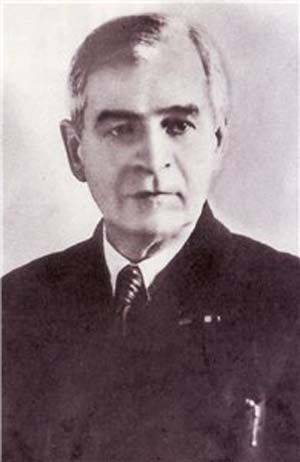 Vladimir Polievktovich Kostenko left behind a large scientific heritage - more than 90 scientific papers and publications. In 1946-1956, he was a member of several scientific and technical societies at once, and in 1950 he was elected to the editorial board of the magazine “Shipbuilding”. However, his main work, he considered the book "On the" Eagle "in Tsushima, over which he worked the last years of his life. It collected memories of the march to the Far East of the Second Pacific Squadron, the transition and everyday life, the tragedy of the Tsushima battle. Much attention is paid to the analysis of failures that have befallen the Russian fleet in this enterprise. The book contains good technical material, gives an assessment of the evolution of the shipbuilding shipbuilding in general. Kostenko's memoirs, although published in large editions, were a bibliographic rarity, and they could not be found in any library.
Vladimir Polievktovich Kostenko left behind a large scientific heritage - more than 90 scientific papers and publications. In 1946-1956, he was a member of several scientific and technical societies at once, and in 1950 he was elected to the editorial board of the magazine “Shipbuilding”. However, his main work, he considered the book "On the" Eagle "in Tsushima, over which he worked the last years of his life. It collected memories of the march to the Far East of the Second Pacific Squadron, the transition and everyday life, the tragedy of the Tsushima battle. Much attention is paid to the analysis of failures that have befallen the Russian fleet in this enterprise. The book contains good technical material, gives an assessment of the evolution of the shipbuilding shipbuilding in general. Kostenko's memoirs, although published in large editions, were a bibliographic rarity, and they could not be found in any library.Vladimir Polievktovich Kostenko lived a difficult, eventful life, not easy events, during which he devotedly served his homeland - be it the Russian Empire or the Soviet Union. He had the opportunity to emigrate, like many old school specialists, but he did not. Honestly served the Soviet government, some representatives of which could not forgive him either membership in the Socialist Revolutionary Party, or such an inconvenient origin. In many respects, it is this modest shipbuilding worker that Russia owes to the presence of large shipbuilding centers in Severodvinsk and in Komsomolsk-on-Amur, which have given the country a multitude of ships.
It is hoped that when readers and viewers finally get tired of crunching an endless French bun, writers and directors will turn their attention to such a hero of their time as Vladimir Kostenko. And there will be books and films not about the next popularly sufferer-officer, but a work describing reality as it was, well, maybe slightly embellished in order to educate young people.
Information